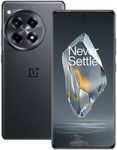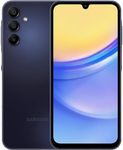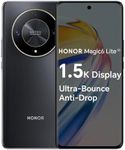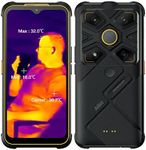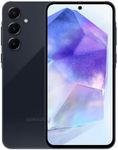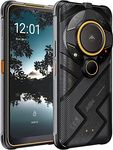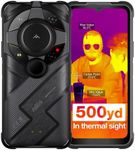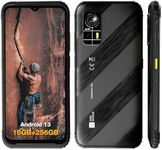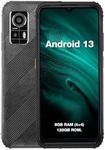Buying Guide for the Best Dual Sim Smartphones
Choosing the right dual-SIM smartphone can be a bit overwhelming given the variety of options available. Dual-SIM smartphones allow you to use two different SIM cards in one device, which can be incredibly useful for managing work and personal calls, traveling, or taking advantage of different data plans. To make an informed decision, it's important to understand the key specifications and how they align with your needs.SIM TypeThe SIM type refers to the size and format of the SIM cards that the phone can accommodate. The most common types are Nano-SIM and Micro-SIM. Nano-SIM is the smallest and most widely used in modern smartphones. It's important to check which type your current SIM cards are and ensure the phone supports them. If you have older SIM cards, you might need to get them replaced or cut down to fit.
Dual-SIM StandbyDual-SIM standby means that both SIM cards are active and can receive calls and messages, but only one can be used at a time for calls or data. This is important if you need to be reachable on both numbers but don't need to use both simultaneously. If you frequently switch between numbers, this feature can be very convenient.
Dual-SIM ActiveDual-SIM active means that both SIM cards can be used simultaneously for calls and data. This is useful if you need to be on a call on one SIM while still being able to receive calls on the other. It's a more advanced feature and can be particularly beneficial for business users who need constant connectivity on both lines.
Network CompatibilityNetwork compatibility refers to the types of networks (2G, 3G, 4G, 5G) that the phone supports on each SIM slot. It's important to ensure that the phone supports the network bands used by your carriers. For example, if you need high-speed internet on both SIMs, make sure the phone supports 4G or 5G on both slots. This is crucial for ensuring you get the best possible connectivity and performance.
Storage and RAMStorage and RAM are critical for the overall performance of the smartphone. Storage refers to the amount of space available for your apps, photos, and other data, while RAM affects how smoothly the phone can run multiple apps at once. If you use your phone for heavy multitasking or gaming, look for a device with at least 4GB of RAM and 64GB of storage. For lighter use, 3GB of RAM and 32GB of storage might suffice.
Battery LifeBattery life is crucial, especially if you plan to use both SIM cards actively. A larger battery capacity (measured in mAh) generally means longer usage time. If you're a heavy user or often away from charging points, look for a phone with at least 4000mAh battery. For moderate use, a 3000mAh battery might be adequate. Consider your daily usage patterns to determine the right battery capacity for you.
Camera QualityCamera quality is important if you frequently take photos or videos. Look at the megapixel count, but also consider other factors like aperture size, image stabilization, and additional features like night mode or portrait mode. If photography is a priority, look for a phone with a higher megapixel count and advanced camera features. For casual use, a basic camera setup will suffice.
Operating SystemThe operating system (OS) determines the user interface and the types of apps you can use. The two main options are Android and iOS. Android offers more customization and a wider range of devices, while iOS is known for its smooth user experience and integration with other Apple products. Choose the OS that you are most comfortable with and that best fits your ecosystem of devices.




